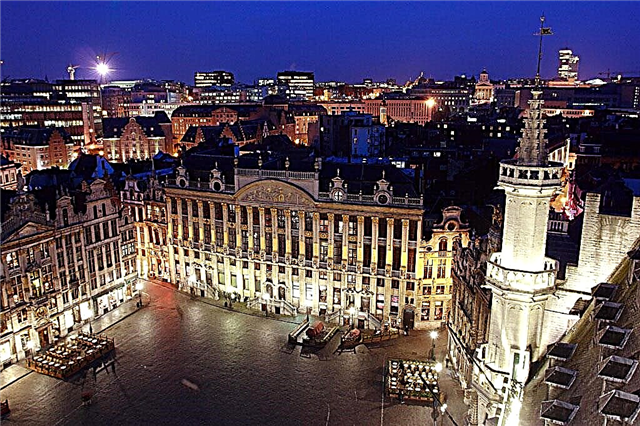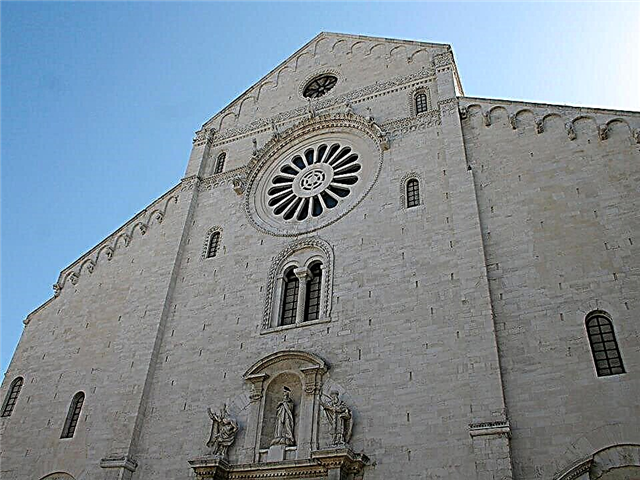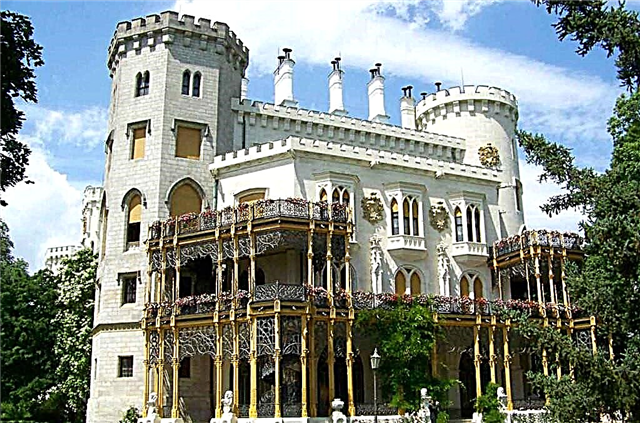The famous hills on which the city of Rome was built were kept, and will do so forever, their interesting history. Often it was born in archaeological excavations, ruins, preserved sights. The Capitol Hill, where the meetings of the ancient Senate were held, the temple of the gods of the ancient Romans towered, conceals amazing evidence of the past of the city and country. The Capitoline Square of Rome, located at the highest point of the hill, is still considered its main square. The eternal Capitoline she-wolf, called the symbol of the city, attracts tourists to hear its fascinating history with its old legend. Wake up to see the riches in the museum.
History
The architectural masterpieces of museums are palaces designed along the perimeter of the famous square, with works of art and ancient artifacts stored in their halls. Ancient buildings, towering on the hill, were destroyed, plundered, burned. Only in 1536, by decrees of King Charles V, the revival of the life of the Capitol began. The work on the creation of a new ensemble was entrusted to the great Michelangelo Buanarotti. At this time he was the main court architect and artist. He was commissioned to create palaces to house the collection donated by Pope Sixtus IV around 1471.
They represented famous works of art, jewelry, coins of the Middle Ages, the Renaissance. Many, for example, unique bronze statues, were brought from the collection of the palace of the famous Lateran family.
The complex is based on the architectural heritage designed by Michelangelo. These are the two palaces of the Palazzo Conservatory, Nuovo. And also the Capitol Square itself. The master's ingenious idea helped to create a small space in the form of a trapezoid, open for viewing. The paved area lined with elliptical beams has a strong optical effect that expands its boundaries. The followers of Michelangelo completed the construction in 1654.
The main building of the square is the Senatorial Palace. The building is surrounded on two sides by the Capitoline Museum, an architectural marble representation of the Nile, Tiber. The waterways that gave life to many inhabitants of the planet, the Palace of the Conservatives. Michelangelo's works, according to art critics, hide encrypted messages and secrets. The solution to many is still ahead. In the central part of the square there is a statue of the emperor Marcus Aurelius. A rare treasure reborn from ancient times.
Museum buildings and exhibits
To get here, you do not need to book a ticket in advance, stand in a long line. You can just come for a walk, admire the grandeur of the buildings, the unique design of the square. Three buildings of the museum complex, connected by an underground gallery, are filled with various collections of paintings, sculptures, exhibits from the eras of the Roman Empire, Etruscans, etc. During the tour you can see the wealth of the palaces. But learning the history, carefully examining the stored treasures, will not work.
The Palace of the Senators, built in the XII century, the Palazzo Conservatory, Nuovo, which appeared in the XVI, XVII centuries, contain a huge number of valuable exhibits. Among them are unique art galleries with works by Caravaggio, Titian, Tintoretto, etc. Ancient statues, mosaics, works of art from the Baroque, Renaissance styles. The complex was supplemented by the small Caffarelli-Clementino palace in the 20th century. Among the unique collection of sculptures kept in the Capitol Museum are the following world masterpieces.
Capitoline wolf

It is a worthy Symbol of Rome, reflecting the myths of the country. The period 1021-1153 is considered to be the most confirmed date of the monument's construction. The statue is made of bronze. For many years it was believed that it was made by the Etruscans in the 5th century BC. e. Information from the monk's notes says that at first a she-wolf without newborn brothers was in the Lateran palace next to the court, the so-called place of execution at the "she-wolf". It was a deity or "mother of the Romans."
By order of Sixtus IV, she was transported to the Palazzo Conservatory in 1473. The figures of babies appeared in the she-wolf at the end of the 15th century. They are done in a different manner. A copy of the She-Wolf is installed high on a column to the left of the central museum. There are similar copies in different countries. For example, Romania, where they are considered a symbol of world heritage. Near the Olympic stadium in Tokyo. In Pisa, New York, Paris.
Dying Gaul

A marble copy was made from a bronze original commissioned by Emperor Attalus I around 230 BC. as a sign of victory over the army of the Gauls. The author of the statue is believed to be Epigonus, a sculptor from the Attalid dynasty. There is a version that confirms that the creation was discovered during the construction of a villa in Rome, and then bought by Pope Clement XII and kept in the Palace of Ludovisi.
During the war with Napoleon, the statue was taken to France. There, the work was exhibited as an exhibit at the Louvre. The drama and naturalism of the sculpture make it one of the heights of the art of ancient times. The naked figure of a Celtic warrior lying on a shield surprisingly fully conveys the pain, the annoyance of a fatal defeat.
Capitoline Brutus
The bronze sculpture of a portrait of a man is considered the creation of the Etruscans, born at the beginning of the 3rd century BC. It was found among the excavations of Rome around 1500. The similarity of the portrait with Brutus, depicted on the coins of Rome, gave reason to consider him the founder of the Roman Republic. The sculpture was found in its original form without any damage. Hair, forehead, cheeks, inlaid eyes are completely preserved. Some of the clothes were made anew to the style of the Roman emperors.
The boy pulling out a splinter
In the ceremonial hall of the Capitoline Museum, there is a bronze sculpture of a boy sitting on a stone, pulling a thorn out of his left leg. The statue never disappeared in the historical storms of the Middle Ages, remaining visible. There are legends explaining the appearance of the statue. According to one, it is believed that the boy was a shepherd sent to the Romans to warn them about the attack of enemies.
Overcoming the pain in his leg from a splinter, the boy climbed the hill, fulfilled his duty with dignity, pulled out the splinter, and died. Sculpture from the Renaissance was one of the first to be copied by order of wealthy people. Marble versions of the original are kept in the Medici collection, the British Museum, a gallery in Pavlovsk, compositions of the Nikitsky Botanical Garden.
Colossus of Constantine

The surviving parts of a giant portrait statue depicting the seated Emperor Constantine the Great are kept in the Capitoline Museum. The estimated time of creation of the statue dates back to the reign of Constantine. The height of the head of the statue is almost 2.5 m. The dimensions of the feet and hands give reason to believe that the total height of the sculpture reached 12 m. The body of the statue was made of marble. The clothes were made of wood covered with gilding and bronze (acrolite technique).
The statue was originally located next to a public space near the Basilica of Maxentius, Constantine, symbolizing the divine authority of the state. It is assumed that the statue was damaged by vandals. The ancient masterpiece acquired a new life by 1486.
Now the fragments of the statue located in the palace courtyard are arranged in the following order: right hand, knee, head, passage to the museum, column. Then the left leg. There are two different fragments of the right hand. This is due to the alteration of the statue at the end of the reign of Constantine. The hand holding the scepter was replaced.
Palace of the Conservatives

The Palazzo dei Conservatori is named similarly to a courtroom for judges, senators, or a conservatory. Important decisions of the ruling forces of the country have been made here since the 15th century.Now the palace houses a collection of marble sculptures preserved from the period of Ancient Rome. The well-equipped rooms house the famous frescoes, the Pinakothek with paintings by Caravaggio, Rubens, Velazquez, and the legendary Capitoline wolf. The artifacts of the works of the Greeks and Etruscans are in the Castellani hall, along with a wonderful collection of red-figure black-figure Greek vases.
The famous fresco depicting the combat between the Curiatias and the Horace, the statues of Urban, Innocent X are located in a special room. The Halls of the Conservatives, the New Museum, and the Art Gallery have been opened in the Palace. The exterior design of the Palazzo dei Conservatori is famous for its original architectural techniques in the form of pilasters located on different floors.
Later they were used in buildings of different times by many countries (for example, one of the railway stations in Moscow). The first building of the palace was erected in the middle of the 15th century. The façade was decorated with arches flanking six windows on the ground floor. Several of them have survived now. The final design of the harmonious facade was carried out much later.
Palazzo Nuovo
The palace belongs to the new architectural structures of the 17th century ensemble. The construction of the palace began in 1571 and ended around 1654. The implementation of Michelangelo's ideas was carried out by Giacomo Della Porta, Girolamo Rainaldi, Carlo Rainaldi. It is a replica of the Conservative Palace, intended to serve as a public museum since 1734. The palace is called the first public museum in Rome. Sarcophagi, statues, busts, masterpieces of ancient art, for example, "Cupid and Psyche", statues of Capitoline Venus, the Dying Gaul, ancient mosaics can be seen in the spacious halls of the two floors of the palace.
More than a hundred ancient sculptures of gods and heroes are displayed in the Gallery of the palace. The halls of the Palazzo bear original names, for example, the Hall of Doves, Faun, philosophers, gladiators, emperors, and the Cabinet of Venus. In the courtyard there is a marble "Talking Statue" Fountain Marforia, created in 1588. The inhabitants of the ancient city gathered nearby to express their dissatisfaction on everyday issues.
Palace of the Senators
The exterior of the ancient palace, conceived by the great Michelangelo, has been preserved in its original form since 1605. The place, surrounded by the Capitoline Square and the Roman Forum, has always been at the center of the city's political life. Back in 78 BC, Tabularia, the archive of the state, was located here. A dilapidated building in the Middle Ages, it was restored, changed. A beautiful staircase with a fountain and a sculpture "Jubilant Rome", statues representing the Nile, the Tiber gave a different look to the palace. The facade of the building was decorated with baroque elements. The lower part of Tabularia and two side towers have been preserved. In 1582, the Bell Tower appeared, replacing the medieval building.
Now you can see the halls of the city council (the hall of flags), the Soviets (it contains the sculpture of Julius Caesar, made in the 1st century BC). Capitoline Proto-Library, a collection of busts. Meetings of the city mayor's office are held in the palace. Many premises are not permitted for inspection. You can freely visit the Lapidarium, which stores ancient stone slabs with ancient inscriptions.
Equestrian statue of Marcus Aurelius

The fate of many ancient statues was not as happy as that of this one. This is often associated with the accidental assumption that the ancient sculptural work belonged to the Emperor Constantine. He made the official religion of Rome Christianity, stopping the destruction of antiquity artifacts by order of the church in the Middle Ages. The original statue of the emperor is in the Capitoline Museum, and its majestic copy adorns the center of the old square.
It is believed that the statue was made in 180 years by an unknown author. The pedestal of the statue is made of the columns of the temple of Castor, Pollux. The reign of Marcus Aurelius (Marcus Annius Catilius Severus) was called the golden period of ancient history. Initially, the statue, in the form of an emperor sitting on a bronze horse, making a gesture to the army in honor of another victory, stood on the slope of the Capitol Hill. From 1538 she received a seat on the Capitol.
Cafarelli-Clementino Palace
The building is located next to the three main palaces of the Capitoline Museum complex. This is an example of civil engineering architecture of the 16th century. Four interesting expositions are organized on the squares of the building:
- Museum of coins. It keeps about 20 thousand rare types of coins, old seals, medals
- Hall of frescoes. Or "Hall of St. Peter"
- Hall Pediment. Here are the remains of the decoration of the ancient Roman temple of Jupiter, which stood in the II century BC, a scene of animal sacrifices to Mars
- The Santarelli collection in the form of a collection of stones, intaglios, artistic works of stone, made in the period from the XY to the XIX century. Along with the excursions, you can learn in detail about the ancient methods of processing precious stones
Dungeon
Three museum buildings were connected by a huge underground tunnel, which was laid in the bowels of the square in 1930. The Lapidaria Gallery (Conjunzione) with interesting artifacts is a popular tourist destination. Here are the ruins of an ancient Roman dwelling, a collection of ancient inscriptions on stones. The entrance is at the famous Roman Forum.
Opening hours and ticket prices
There are always many people who want to visit the palaces of the Capitoline Museum. Therefore, it is better to book tickets in advance. There is a single complex ticket that gives the right to visit all places of interest. The price of a full ticket is 15 €, a concessionary ticket is about 12 €. The museum is open every day except Monday and Sunday from 9 am to 8 pm.
Where are they and how to get there
A half-hour walk from the Colosseum, next to the Roman Forum, on the Capitol Hill at Piazza del Campidoglio, there are museum buildings. You can take the B metro line and get off at Colosseo station. By bus on routes 30, 170, 810, 85 you need to get to the Ara Coeli-Piazza Venezia stop. Or take tram 8 to the last stop, Piazza Venezia.











